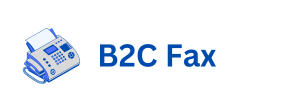Content marketing is an effective strategy that helps online businesses and websites achieve their objectives by publishing quality content. The content is the primary factor that decides the fate of their campaign and goals.
If the content is original, relevant, optimized, and high quality, it is destined to be considered by search engines for ranking. As a result, it increases visibility, and marketers can better attract online traffic.
can lead content marketers to grave consequences. However, as there is nothing new under the sun, we all need inspirational or informational sources.
To do so, sometimes content creators cross the thin line between duplicating and getting ideas. In this chaos, newbie marketers try to figure out if there is a certain plagiarism of plagiarism that is allowed.
If you are also looking for an answer to the same question, this article is for you. It will shed light on the accepted plagiarism percentage in the content marketing industry.
What is Plagiarism
Plagiarism is a notorious act of copying others intellectual property and publishing it as your own. Claiming other attributions without crediting them as the original source is a form of theft.
WhatsApp information, which encompass whatsapp data chats, media, and contacts and the work this for the text and work this for, offers valuable insights for personal and commercial company use. By reading and to the and home text message styles, engagement metrics, and purchaser remarks, businesses can this for the work the text this for the work and text for decorate verbal exchange techniques. This information additionally and the work this for the vary important and the work enables customer support, lead generation, and emblem awareness in cutting-edge and the cell-pushed worldwide.
Therefore, it is considered unethical in every writing background. Whether you are a content marketer or a writer, avoid committing plagiarism and misusing others’ intellectual property.
Some marketers are of the view that copying others’ work entirely only falls under the domain of duplication. However, plagiarism constitutes a lot more than just direct plagiarism. Go through the following details to learn about some other types.
Accepted Percentage of Plagiarism
If you want a straightforward answer to the question, “How much plagiarism is accepted in content marketing? ” The answer is “zero.” Some marketers and writers have a misconception that a certain percentage of duplication is acceptable (i.e., 5-10%).
However, the truth is any amount of plagiarism is too much in content marketing. In content marketing, no duplication is allowed. Plagiarism is greatly disregarded, and if someone commits it, they have to face grave consequences. Therefore, always strive to create and publish 100% original and duplication-free content.
Consequences of Plagiarism in Content Marketing
Plagiarism is strongly disapproved of in both professional and academic settings. In content marketing, it’s especially important to avoid it, as it can lead to serious consequences. Below are some significant repercussions of copying others’ work.
Loss of Reputation
As a matter of fact, committing an unethical act will compromise your reputation and credibility if you implement it in the current scenario. Engaging in plagiarism will damage your reputation in the eyes of the targeted audience, search engines, and similar platforms in the niche. When the audience stops trusting your platform, they won’t revisit or engage with your content. Similarly, the search engines won’t rank you, and niche-relevant sites won’t consider you for backlinking.
You will get the email list of all countries from us. You can promote your products and get orders through direct voice calls or SMS with your consumers with email list. If you have an email list, consumers will be interested in your product, and your product will be more likely to sell.
Search Engine Penalties
In content marketing, the ultimate goal is to achieve higher search engine rankings and visibility. However, you can some truths from the book “factfulness” by hans rosling achieve this by publishing high-quality and original content. Search engines penalize websites with duplicate content. These penalties vary depending on the extent of plagiarism. For instance, you can face a significant drop in rankings to complete removal from search engine indexes.
Face Legal Troubles
Usually, online content is protected by copyright law and is the intellectual property of the publishing source. By copying others’ content, you are compromising their intellectual property. Consequently, they have the right to send you legal notices. Legal procedures will escalate continuous downfalls and problems. For instance, you have to hire an attorney, appear in court hearings, pay fines, face defamation, etc.
How to Check Plagiarism Percentage
Identifying the total percentage of plagiarism is an important step in authenticating your content. However, it is nearly impossible to evaluate the percentage manually.
That is where the need for a plagiarism asb directory checker arises. It is a tool that helps identify similar texts and calculate the total originality and plagiarism score. It scans submitted text against a vast database of online sources, academic papers, and other published materials to detect similarities.
For this purpose
You can use a plagiarism checker with percentage that generates a comprehensive report.
Firstly, it will help you by displaying the percentage of plagiarized and original text separately, allowing users to clearly understand the status of their content and make necessary revisions.
Conclusion
Though duplicating other sources is considered unethical and should still be avoided at all costs, sometimes the question arises: Is any percentage of plagiarism allowed in content marketing? The simple and most obvious answer is no, as not even the slightest percentage is allowed in content marketing. Plagiarism is quite lethal and causes several consequences. Therefore, it is necessary to aim for a zero-plagiarism goal.


